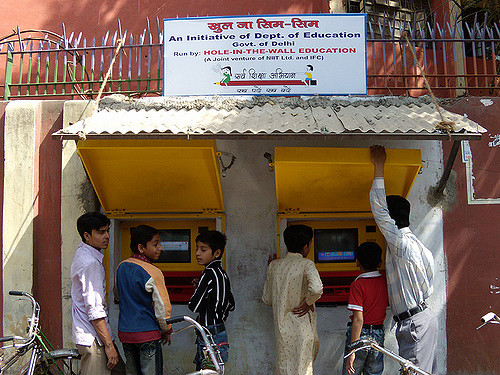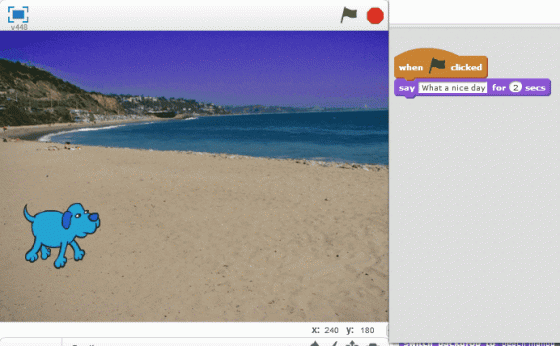The digital technologies curriculum is here and everyone is trying to figure out how to teach the thing. Particularly the coding bit, that’s the steepest learning curve for most teachers and with good reason.
As students we experienced math, science, english, humanities, PE. But coding is different. Most of us are simply too old to have experience with coding in a school setting. We haven’t seen teachers teach it before and suddenly we’re being asked to teach it ourselves? How can we do it? Let’s learn a little from the slums of India.
The Hole In the Wall Experiment
In 1999, Sugata Mitra installed a computer in the wall of a New Delhi slum and left it there unsupervised. Children gathered and started playing with it, learning together how it worked. Students were learning, independently, no teacher required. This is Sugata’s famous “Hole in the wall” experiment and you can watch a TED talk about it all here.

Sugata continued the research and discovered that while SOLEs (self-organised learning environments) were great for student learning and agency, there came a time when students would become frustrated by a lack of progress and would give up. The learning ends there. But Sugata found an answer.
Introducing the Helpful Granny
Sugata hired an assistant to stand near the children and behave like a “helpful granny”. By doing so, he found that students continued with the learning and didn’t give up. How does a helpful granny behave?
Clueless but infinitely encouraging.
- “That’s great, you’re doing such a good job”.
- “Wow, I never could have done that, what will you try next”?
- “I’m not sure how to do it, but I’m sure YOU can. I believe in you”
Simple but effective. Importantly, you don’t need a lot of subject knowledge to be a helpful granny.
An example of the Helpful Granny approach
Provide your students with a very minimal Scratch project. It’s nice to start them with at least a little bit of coding in place. Something like this.
A dog, a background and one line of code that makes the dog talk. That’s it. Send them a link to this Scratch project.
Now say something like this.
“I tried using scratch and this is what I made. I think it’s pretty good, but I bet you can make it even better”.
Then let them have at it.
- Little Jimmy adds another line of text for the dog to say. Granny says, “That’s great Jimmy, what are you going to do next?”
- Jane adds a second character. Granny says “Oh that’s really neat, what’s going to happen next”?
- Andrew makes the dog make a barking noise. Granny says “Wow, I didn’t know you could do that, what else can you do?”
Encourage, what next? Encourage, what next? Encourage, what next? Simple right?
The beauty of coding is that there are an infinite number of possibilities and always another way to improve. A learning experience with no ceiling is an incredible opportunity for differentiation and extension and is too good to be ignored.
You don’t need to be an expert at coding to teach coding. Just be a helpful granny.
Note: If you enjoyed this you might like to take a look at this post to find out “Why Learning to Code Doesn’t Suck Anymore“. You’ll be glad you did.


2 comments